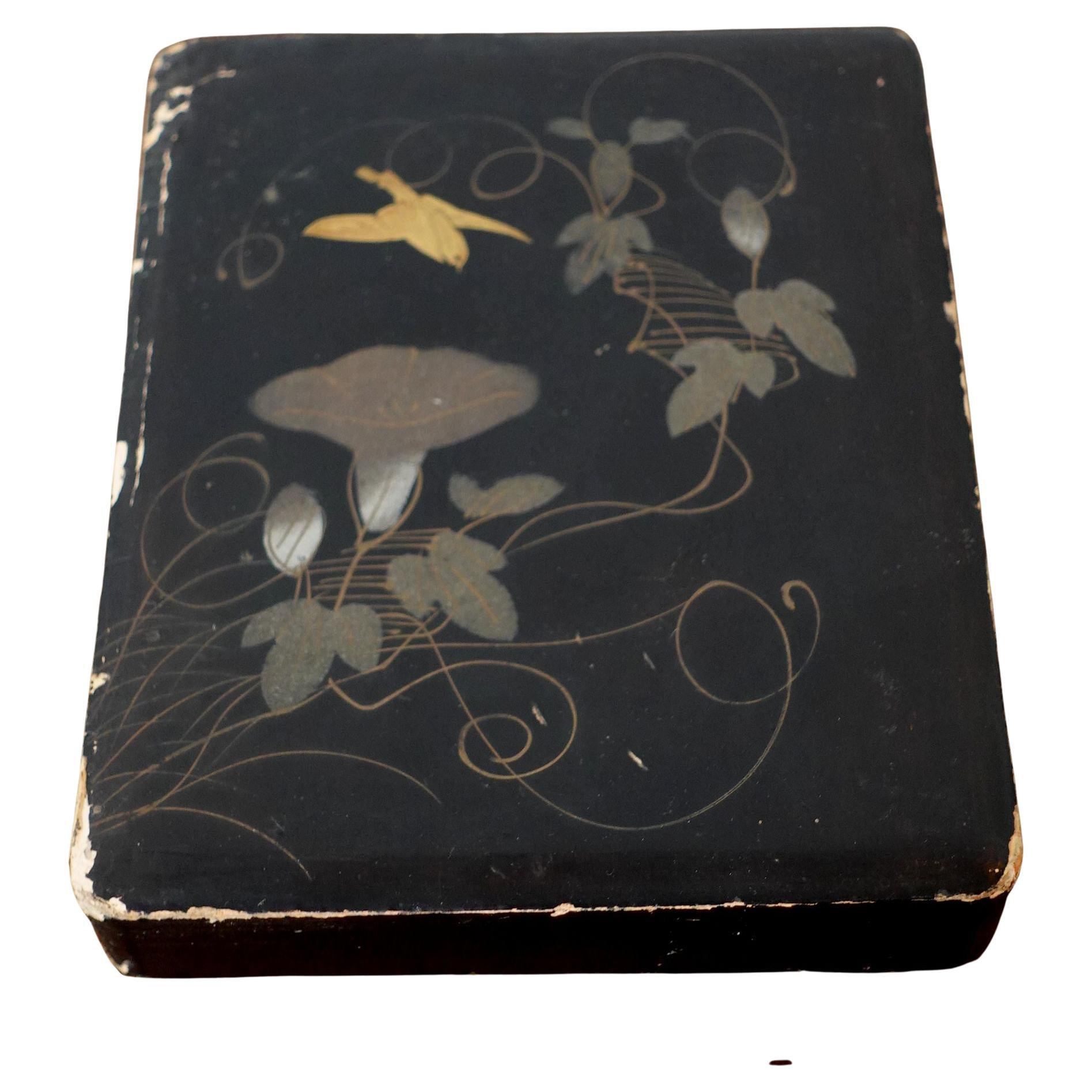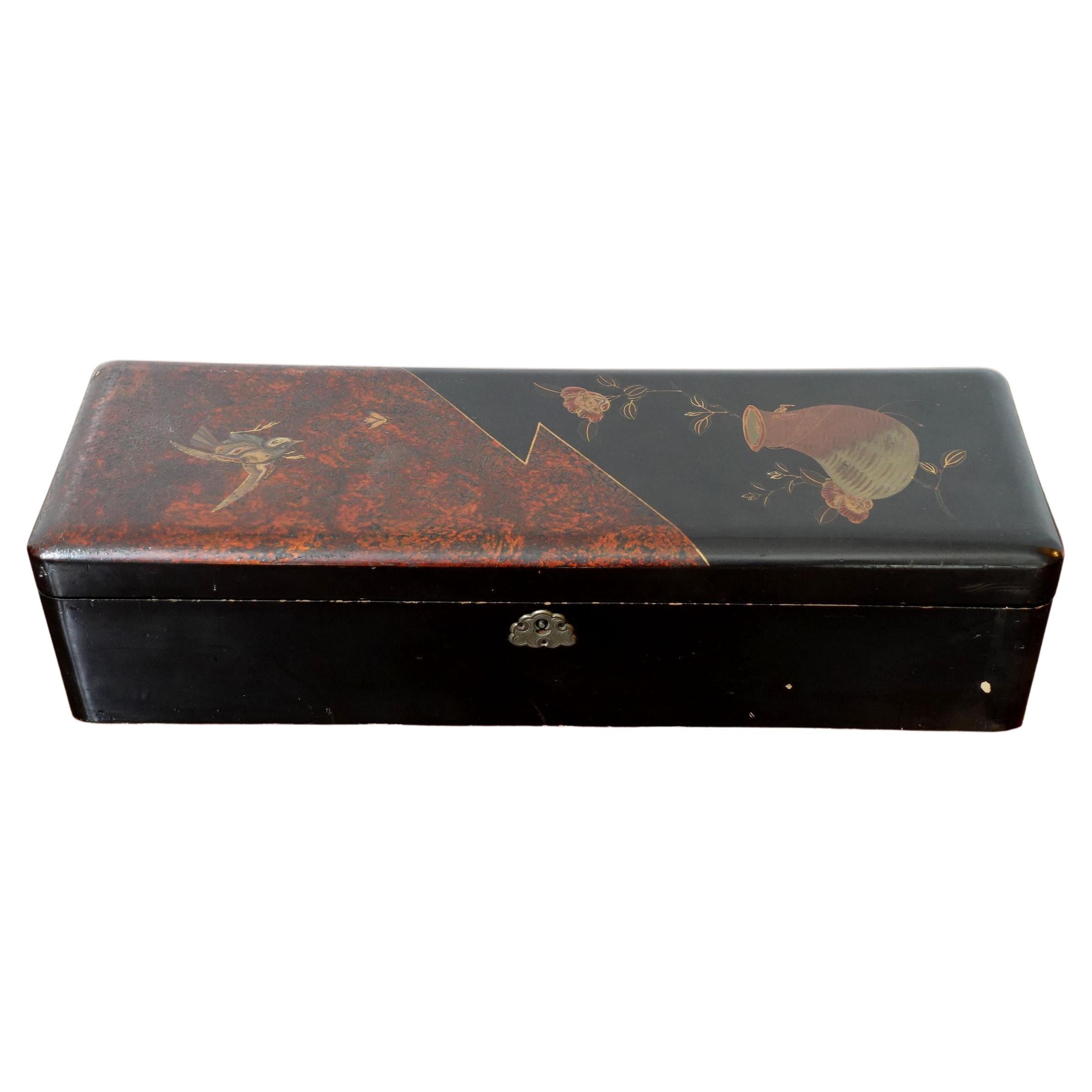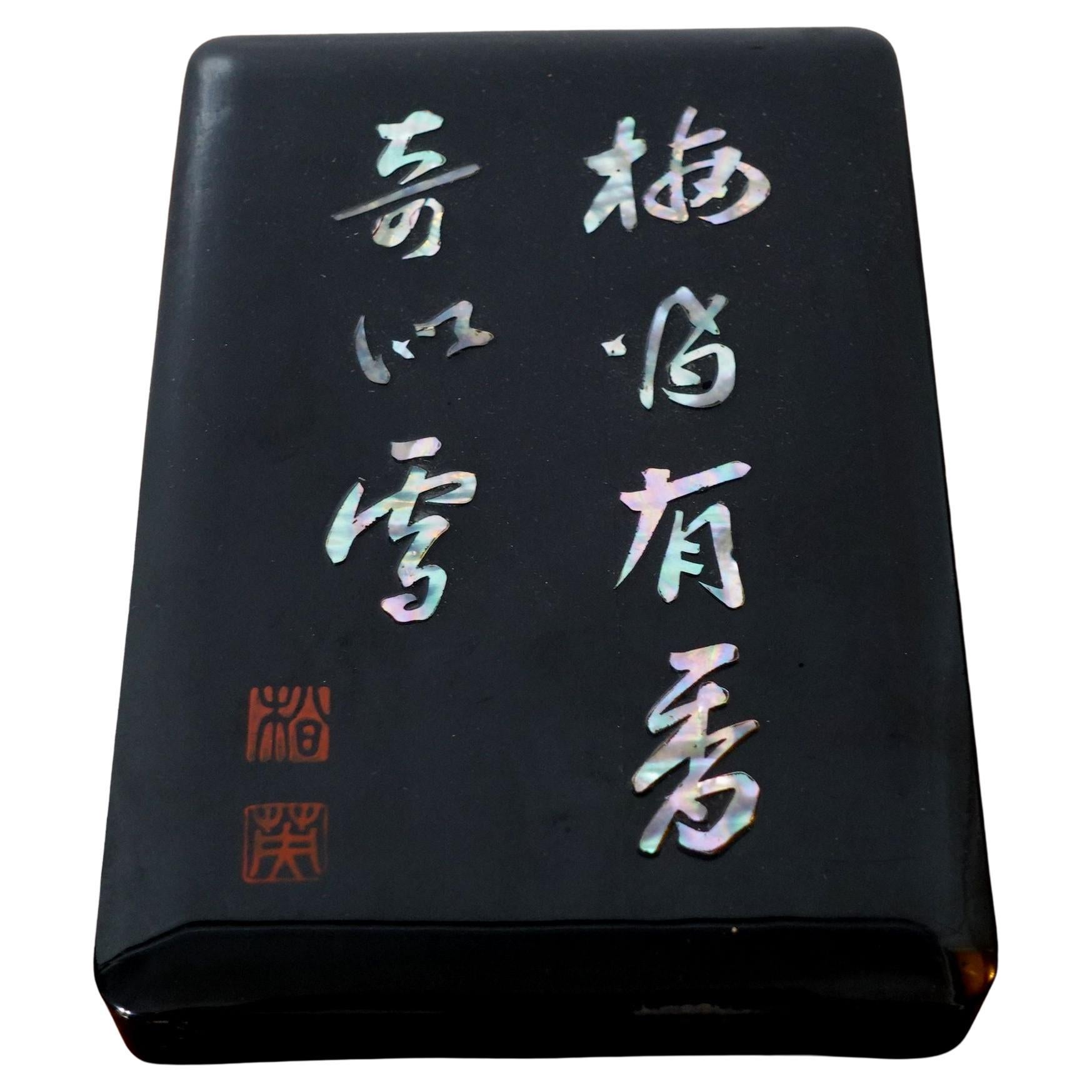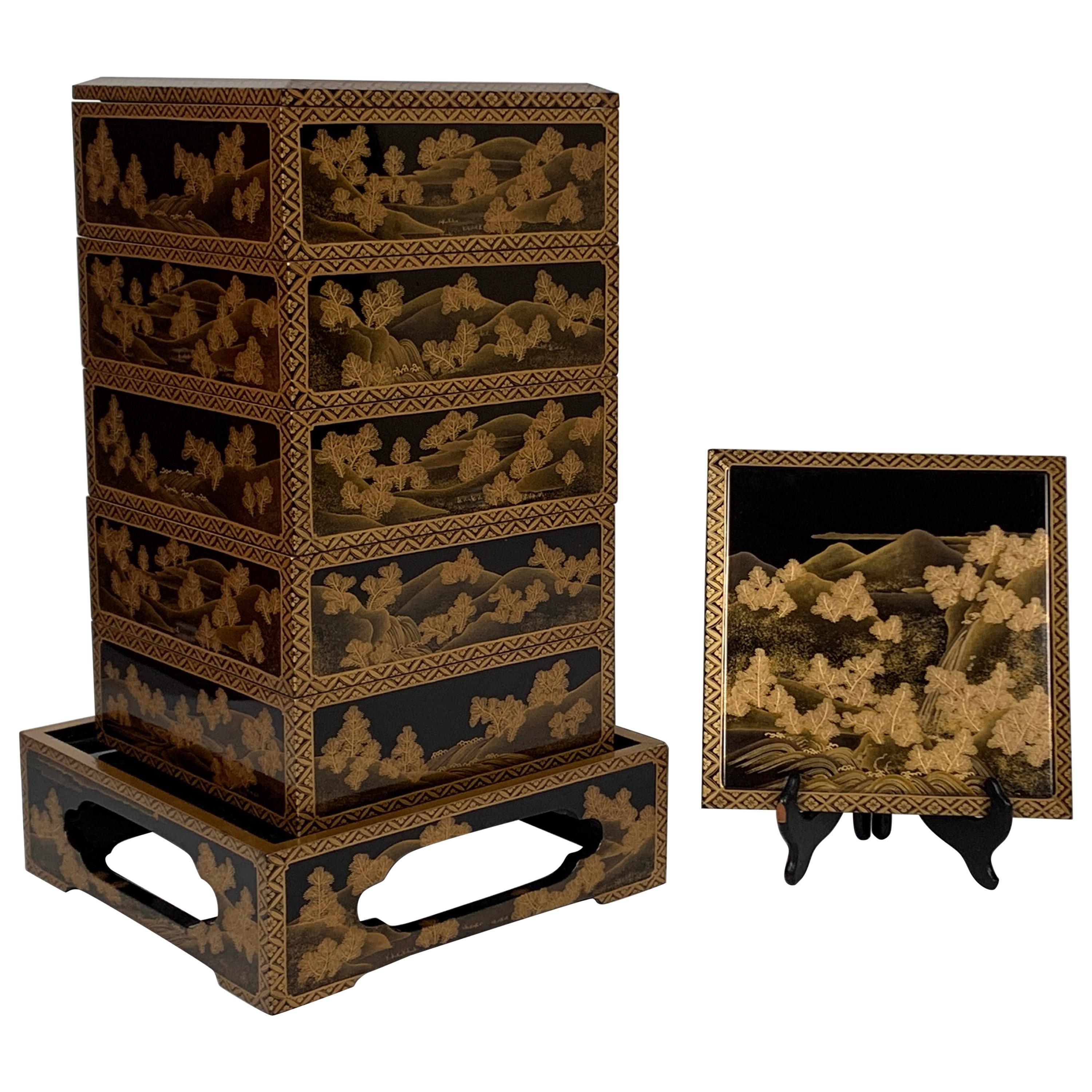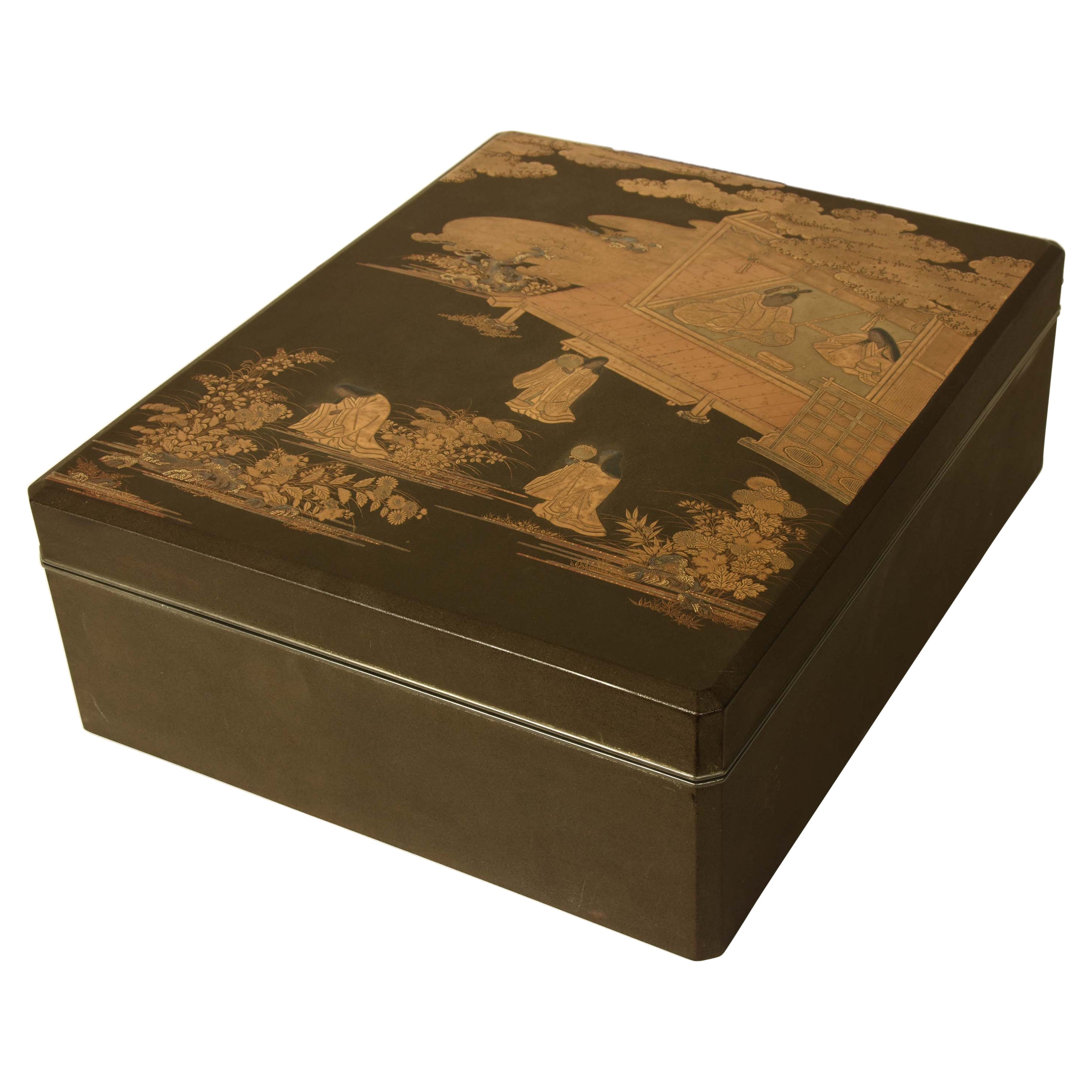Items Similar to Japanese Maki-e Black Lacquered Box, Ric.047
Want more images or videos?
Request additional images or videos from the seller
1 of 15
Japanese Maki-e Black Lacquered Box, Ric.047
About the Item
Japan, Edo to Meiji period, two-tiered, with the cover with a landscape design, the four sides with guilt chrysanthemum flowers.
- Dimensions:Height: 6.5 in (16.51 cm)Width: 8.125 in (20.64 cm)Depth: 4.25 in (10.8 cm)
- Materials and Techniques:
- Place of Origin:
- Period:
- Date of Manufacture:19th Century
- Condition:Wear consistent with age and use. Minor losses. lost small paint at the edges.
- Seller Location:Norton, MA
- Reference Number:1stDibs: LU5848230552462
About the Seller
5.0
Platinum Seller
These expertly vetted sellers are 1stDibs' most experienced sellers and are rated highest by our customers.
Established in 2000
1stDibs seller since 2021
83 sales on 1stDibs
Typical response time: <1 hour
- ShippingRetrieving quote...Ships From: Norton, MA
- Return PolicyA return for this item may be initiated within 3 days of delivery.
More From This SellerView All
- Japanese Maki-e Black Lacquered Box, Ric.051Located in Norton, MAJapan, Edo to Meiji period, decorated with morning glory and a bird in hiramaki-e.Category
Antique 19th Century Japanese Decorative Boxes
MaterialsLacquer
- Japanese Maki-e Lacquered Box, Ric.049Located in Norton, MAJapan, Edo to Meiji period, a long rectangular document box with hinged cover, decorated with a bird and a floral basket, The locker is not functioning.Category
Antique 19th Century Japanese Decorative Boxes
MaterialsLacquer
- Japanese Maki-e Mother of Pearl Inlaid Lacquered Box, Ric.050Located in Norton, MAJapan, Edo to Meiji period, a flat rectangular document box and cover, decorated with mother-of-pearl-inlaid calligraphy with two seals.Category
Antique 19th Century Japanese Decorative Boxes
MaterialsLacquer
- Japanese late Meiji period Large Organizer Lacquered Box, Ric.053Located in Norton, MAJapan, late Meiji period or later, a large black square organizer box and cover, decorated with geometric squares in gold on the coverCategory
Antique 19th Century Japanese Decorative Boxes
MaterialsLacquer
- Large Japanese Mother of Pearl Inlaid Lacquered Box, Ric.062Located in Norton, MAJapan, Edo to Meiji period, a circular with an inner tray lacquer box and cover, decorated with mother-of-pearl-inlaid a lot of intricated carvin...Category
Antique 19th Century Japanese Decorative Boxes
MaterialsLacquer
- Japanese late Meiji period A Large Organizer Red Lacquered Box, Ric.052Located in Norton, MAJapanese late Meiji period A Large Organizer Red Lacquered Box, decorated with irises and butterflies in gold and black.Category
Antique 19th Century Japanese Decorative Boxes
MaterialsLacquer
You May Also Like
- Japanese Maki-e Lacquer Stack Box JubakoLocated in Atlanta, GAAn antique jubako (stack boxes) with five tiers in an elongated octagon shape circa 19th century (end of Edo or beginning of Meiji period). jubako was traditionally used to store and...Category
Antique 19th Century Japanese Japonisme Lacquer
MaterialsWood, Lacquer
- Japanese Maki-e Lacquer Stacking Box, Jubako, Meiji Period, JapanLocated in Austin, TXA fine and impressive Japanese gold maki-e decorated black lacquer five-tier jubako with presentation tray, two lids, and the original tomobako storage box, Meiji period, late 19th c...Category
Antique Late 19th Century Japanese Meiji Lacquer
MaterialsLacquer
- Japanese Black Lacquer Document Box with Gold Maki e Design, Meiji PeriodLocated in Prahran, VictoriaAn antique black lacquer document box with an exquisitely detailed, finely wrought design from The Tale of the Genji depicted in gold maki e across the lid. Internally, the box is de...Category
Early 20th Century Japanese Lacquer
MaterialsWood, Lacquer
- Japanese Lacquer Box with Fine Maki-e Decoration Meiji PeriodLocated in Atlanta, GAA lacquered wood box with lid from Japan circa 19th century Meiji Period. The finely decorated box was used to store paper slips and small documents on the desk. It is overall finished with black lacquer (kuro) with sparse Mura-Nashiji effect outside and on the top surface of the lid, there are three Komainu, (sometimes known as Shishi or Japanese lions) frolicking and forming a circle in lively motion. Komainu are auspicious animals in Japanese cultures in both Shinto and Buddhism tradition. Originally from China, these animals symbolizes guardians to ward off evil spirits. Hiramaki-e was used in combination with carving and combing to render the lions with various surface textures. A gilt border with an slight angle was given to the lid and even the thin band is decorated with miniature floral scrolls. The interior of the box was finished in a dense nashiji. Underneath the lid, a cluster of peonies open lavishly by two gentle mounts. Takamaki-e (high relief) in both gold and silver were...Category
Antique Late 19th Century Japanese Japonisme Lacquer
MaterialsWood, Lacquer
- Japanese Lacquer Maki-E Scroll Box Fubako by Kansonsai Edo PeriodLocated in Atlanta, GAA Japanese lacquered wood fubako (a box to store document or small scroll painting) circa late 18th century of Edo period. The rectangular box features a deep lid with rounded corners and recessed mid-edge and a lower box with two bronze medallion rings and tasseled silk ties. The surface of the fubako was elaborately decorated with hiramaki-e and a low takamaki-e on a mottled Mura-nashiji background. The motifs on the lid depict branches of Japanese pine with finely rendered needles on the lower part; on the upper part, it showcases fruited persimmon branches. Two different shades of gold fundame were used to contrast the design and augmented by scattered gold kirigane to highlight some of the leaves. The design continues and cascades down to all sides of the lid as well as the walls of the box. The two bronze medallions appear original to the box and the silk ties show significant fading from the age. This Fine fubako is signed on the lower wall "Kanshosai" in Kanji with a kao mark. All the trims were finished in gold fundame and the interiors a dense nashiji in gold. Kanshosai is the mark of the distinguished lacquer artist Lizuka Toyo I who also signed his work "Toyosai". He was active in the second half of the 18th century during Edo period, employed by Hachisuka Shigeyoshi (1738-1801), daimyo of Awa on Shikoku Island. Although most survived work bearing his marks are inros, he was also known to decorated trays and other larger objects...Category
Antique Late 18th Century Japanese Edo Lacquer
MaterialsWood, Lacquer
- Japanese Meiji Period Antique Lacquer Box with Gold Maki-e DecorationLocated in New York, NYA fine antique Japanese Meji Period lacquer box decorated with a fan and a stylized star shaped window in the maki-e technique. The fan at the top right corner, fully opened depictin...Category
Antique 19th Century Japanese Meiji Lacquer
MaterialsLacquer
Recently Viewed
View AllMore Ways To Browse
Japan Object
Japan Box
Japanese Boxed
Japanese Box
Antique Japanese Boxes Boxes
Antique Japanese Boxes
Antique Japanese Box Boxes
Antique Japanese Box
Japanese Antique Boxes
Japanese Box Antique
Japanese Antique Box
Japanese Black Box
Japanese Side Box
Japanese Lacquered The Box
Antique Japanese Lacquer Box
Antique Japanese Lacquer Box Boxes
Antique Japanese Lacquer Boxes
Japanese Antique Lacquer Box Boxes
